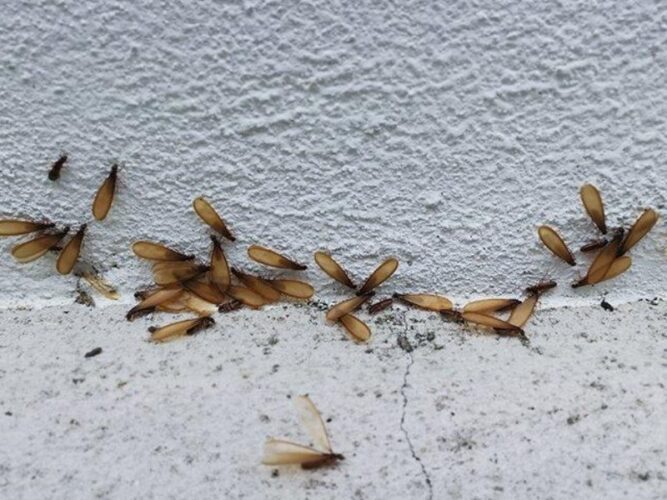Termites are destructive pests that can cause significant damage to your home if left undetected. These silent invaders feed on wood and can go unnoticed for long periods, leading to extensive structural damage.
Being able to identify the early signs of a termite infestation is crucial for timely intervention. In this article, we will explore various subheadings that will help you spot signs of termites in your home.
Mud Tubes
Termites construct mud tubes to provide shelter and maintain moisture while traveling between their nest and food sources. These tubes are usually made of soil, wood particles, and termite saliva.
Look for mud tubes along the foundation of your home, on exterior walls, or in crawl spaces. These tubes are about the width of a pencil and can extend vertically or horizontally.
Discarded Wings
Reproductive termites, also known as swarmers, take flight in large numbers to establish new colonies. They’ll drop their wings and settle down when they discover the right spot.
You can find these abandoned wings at any place of entrance, such as a window sill or a door. If you notice a pile of wings, it may indicate that a termite colony has settled nearby.
Wood Damage
Termites feed on cellulose, which is found in wood and other plant materials. As they tunnel through wooden structures, they create galleries and leave behind a network of tunnels.
Look for signs of wood damage such as hollowed-out or sagging wood, blistering or peeling paint, or small holes in wooden surfaces. Tap on the wood and listen for a hollow sound, as this can be a sign of termite activity.
Frass
Frass refers to termite droppings or fecal pellets. These tiny, wood-colored pellets can accumulate near the infested wood or in piles beneath termite entry points. Termites push out frass from their tunnels as they excavate the wood.
If you come across small piles of powdery substance that resembles sawdust but does not contain wood fibers, it could be a clear indication of a termite infestation.
Noises
While termites are generally silent pests, you may be able to detect certain noises when the infestation is severe. Soldier termites can bang their heads against wood or shake their bodies to signal danger to the colony.
If you hear faint clicking or rustling sounds coming from the walls, floors, or wooden structures, it is advisable to investigate further for termite presence.
Tight-Fitting Doors and Windows
As termites consume wood and create tunnels, they can cause the affected structures to warp or change shape. If you notice that doors or windows suddenly become difficult to open or close, it could be a result of termite damage.
The moisture released by termites can also cause wooden structures to swell, leading to similar issues.
Presence of Swarmers
The presence of termite swarmers is a strong indicator of an active termite colony nearby. These winged termites are typically seen swarming around light sources, such as windows or outdoor lighting fixtures, during the spring or summer months.
If you notice swarmers indoors, it is important to take immediate action to prevent further infestation.
Hollow-Sounding or Weak-Sounding Timber
If you suspect termite activity, carefully inspect the wooden structures in your home. Gently tap on beams, furniture, or other wooden elements and listen for a hollow or hollow-sounding timber.
Additionally, if the wood feels weak or crumbles easily when prodded with a sharp object, it may indicate termite damage.
Conclusion
Identifying signs of a termite infestation in your home is crucial for taking swift action and mitigating potential damage. By staying vigilant and regularly inspecting your property, you can catch a termite problem early and seek professional help.
Remember to keep an eye out for mud tubes, discarded wings, wood damage, frass, noises, tight-fitting doors, and windows, the presence of swarmers, and hollow-sounding or weak-sounding timber. Early detection and prompt intervention can save you from extensive repairs and ensure the long-term integrity of your home.

